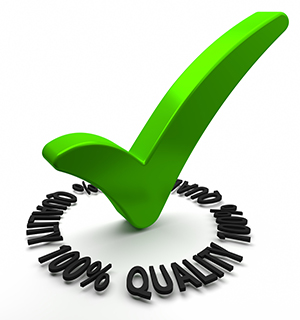A list of the most common customer complaints puts faulty products right at the top! It might be that the product is broken or doesn’t work; doesn’t match its description; isn’t fit for purpose, or is unsafe.
And in these circumstances, consumer groups urge shoppers to seek a replacement or refund, or perhaps a repair. But the thing is, even if you do replace or repair the item, is that customer likely to shop with you again?

While mistakes do happen sometimes, an organisation that is consistently producing faulty goods will find its customers walking away and its costs increasing, due to returns and replacements.
Beware False Claims
In Queensland, products are deemed to be of acceptable quality if they are fit for their usual purposes; have no defects; are safe; are acceptable in look and finish, and are durable.
But it doesn’t stop there. Quality tests also take into account the cost of the product; the nature of the goods; claims made on the labels or packaging, and any claims made by the salesperson.
That’s a lot of responsibility on the manufacturer and the retailer, but there are ways of ensuring these standards are met. A good start is implementing a quality assurance management system.
Choosing a Pro-Active Approach
These days, we place far more importance on quality assurance in Queensland, rather than quality control – and rightly so. There are major advantages to taking this more pro-active approach.
With quality control, products are made and sold and any defects usually comes to light only when a customer makes a complaint. Or, a company must employ quality controllers, who check goods post-production, and remove any faulty items.
There are three major downsides to this approach: cost, time and reputation. Whilst happily replacing a faulty item can perhaps win back a little bit of customer confidence, it means you have manufactured the product twice, with one being wasted. And that wasted product means labour, raw materials, energy costs and more all down the drain.
Quality Assurance Management System
Isn’t it better to get it right first time, every time? of course, and that’s exactly what a quality assurance management system like ISO 9001 sets out to achieve.
ISO – International Standards – are the world’s favourite standards, and a benchmark in not only quality, but also other key areas, such as environmental management, workplace safety and food safety.
ISO 9001:2015 is the latest update in the ISO 9000 family, and it sets out all the requirements and aims of a quality management system. It is a framework within which organisations can set up the measures they need to assess potential errors, and fix them before production.
ISO 9001:2015 is the only standard in this family that can be certified. Gaining accreditation is not only a powerful management tool, but also a sought-after marketing advantage.
Strong Customer Focus
An ISO quality assurance management system can be used by any sized business, across all major industries. Strong customer focus is a key part of the system, ensuring that products meet all necessary criteria every time.
Management commitment is another key factor. Leadership must come from the top and the organisation’s commitment to quality must be communicated down through the ranks. Interestingly, this is usually welcomed by employees. They seek strong leadership, and they want to be proud of the work they do.
Think about it; who wants to work for a company that doesn’t deliver the goods, with everybody complaining to you about a bad experience they’ve had with the organisation! But imagine how motivated an employee feels when they hear praise about the products they produce.
Staff Motivation
Staff motivation is one of many advantages to implementing a quality assurance management system. Others include reduced costs through better use of raw materials and labour; enhanced reputation; new customers through word-of-mouth marketing and more. If certification is successful achieved, the organisation can promote this on its packaging, further enhancing its reputation.
To enjoy these benefits, an organisation should first speak to ISO professionals, such as Standard Consulting in Brisbane. They can help you develop and implement your own tailor-made quality assurance management system, and support your training needs.
‘Tailor-made’ are key words; whilst the ISO 9001 framework can be used by all, it is important for an organisation to adapt it to its own needs. It should reflect your industry, your product, customers and your targets and goals.
Training and Communication
Training and communication are vital for the system’s success, as your staff are your biggest asset and must share the responsibility. From the top down, it is everybody’s job to ensure that risks are identified and addressed to ensure conformity. Any product quality problem should be immediately documented and remedied – and then checked to ensure the remedy is working.
The inspection and testing part of an ISO 9001 quality management system is crucial. With proper implementation and training, it becomes second nature and can be applied throughout the organisation. Indeed, many companies find the ISO approach so effective, they choose to implement an integrated management system, with ISO 9001 at its core.
